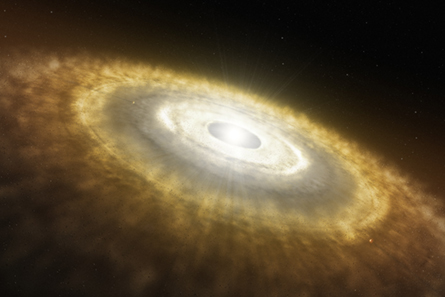Astronomers have identified an easy-to-measure chemical fingerprint for determining which sunlike stars are likely to host planets. The marker — a low abundance of lithium in the atmosphere of these stars — could prove an invaluable guide for planet hunters trying to determine which of the myriad sunlike stars to select for long-term study.

In their study, Garik Israelian of the Instituto de Astrofísica de Canarias in Tenerife, Spain, and his colleagues relied on data from a census of 133 sunlike stars, most of them monitored for several years with the European Southern Observatory’s HARPS spectrograph at the La Silla observatory in Chile. Tiny wobbles in the motions of 30 of these stars indicate the gravitational tug of unseen planets.
In the Nov. 12 Nature, Israelian and his colleagues report that the majority of sunlike stars hosting planets in the HARPS sample have, on average, one-tenth the amount of lithium of those without planets. It’s been known for decades that Earth’s sun shows such a depletion.
“Those sunlike stars with low lithium will have a higher chance to bear planets,” Israelian says.
One explanation for the lithium finding, he notes, is related to a star’s rotational history. According to a leading theory, stars born with a swirling disk of dust and gas — the disk from which planets coalesce — tend to rotate more slowly than stars born without such disks. The planets that form out of the disk retain some of the rotational energy that the star would otherwise have. The slower a star’s rotation, the easier it is for lithium at the top of a star’s atmosphere to mix into deeper, hotter layers, where it burns up.
“There is a good case to make that the rotation of the parent star is influenced by whether planets form around it or not,” says astronomer Marc Pinsonneault of Ohio State University in Columbus, who wrote a commentary accompanying the report in Nature. “The bottom line is that planets aren’t just debris left over from star formation,” he says. “Planet formation changes the basic properties of the star that they orbit.”
The link between low lithium abundance and planets holds true only for sunlike stars, says Israelian. Cooler, lower-mass stars destroy most of their lithium early on, during their first 10 million to 100 million years of life. Stars more massive than the sun and with temperatures some 200 kelvins warmer can’t mix as much lithium into deeper layers, making it difficult to destroy the element.
Researchers have previously found evidence that any star, regardless of whether its mass approximates that of the sun, is more likely to have planets if the star has a high abundance of metals such as iron. Looking for sunlike stars that have both traits — small amounts of lithium and high amounts of iron and other metals — may offer the most powerful strategy for finding planets beyond the solar system, says Israelian.







